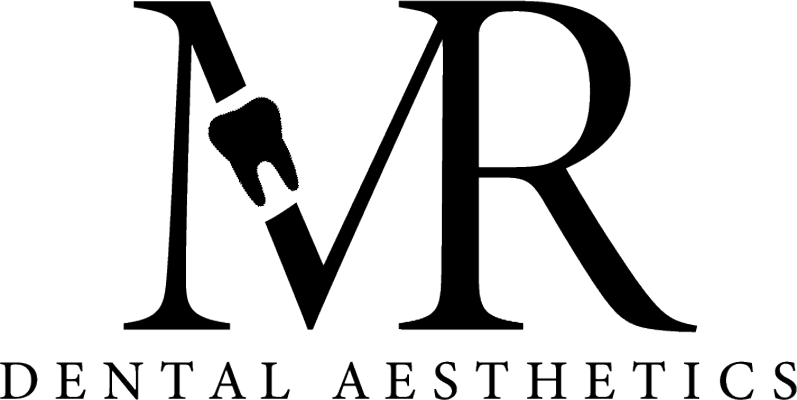Gum disease is one of the most prevalent conditions we see at MR Dental Aesthetics. Nearly half of the adults over the age of 30 exhibit symptoms of gum disease, and as many as nine percent suffer from severe gum disease. As the leading cause of tooth loss, gum disease should not be overlooked. The good news is that numerous effective periodontal treatments are available today to help resolve this issue.
What is Gum Disease?
Gum disease, also called periodontal disease, is an infection of the tissue surrounding the teeth. It’s caused by a buildup of plaque — a bacteria made up of leftover food particles and saliva. When not removed adequately through at-home oral hygiene practices and regular dental cleanings, this bacteria can damage not only the gums but also the jaw bone and, eventually, the teeth.
It can even lead to other, more severe conditions, including oral cancer. So, how do you know if your gums are infected? We’ll cover the causes and symptoms of periodontal disease in this article.
Common Causes of Gum Disease
The causes of gum disease are varied. Before treating your periodontal disease, Dr. Rashti will work to determine the underlying factor so she can tailor your treatment plan to prioritize your long-term periodontal health. Below are common causes of gum disease.
- Oral hygiene habits. Keeping up with brushing, flossing, and maintenance visits to your dentist are crucial to preventing gum disease. Individuals with poor oral hygiene are two to five times more likely to develop this inflammatory infection.
- Smoking. Smokers are twice as likely as non-smokers to develop gum disease. Furthermore, all forms of tobacco use are known risk factors for severe periodontal disease.
- Genetics. Research suggests that as many as one-third of the cases of gum disease are genetic.
- Stress. Stress is a part of life. However, stress can also suppress your immune system, creating the perfect conditions for gum disease to thrive. Research has found a strong connection between stress and periodontal disease.
- Nutritional deficiencies. Some studies suggest that being deficient in specific nutrients — particularly vitamin C — increases the risk of gum disease.
Dr. Rashti always places an emphasis on the patient’s total well-being, understanding that gum disease plays a role in nearly every other major illness. During your initial consultation, she will discuss your overall health to ensure a holistic approach to treating your gum disease.
How to Tell If You Have Gum Disease: 7 Gum Disease Symptoms
Learning to recognize the signs of gum disease at home can help you catch it early. That is why we constantly educate patients. We want you to know how to tell if you have gum disease and when it’s time to seek professional care. Many symptoms are easy to notice during everyday activities, including brushing teeth and eating. If you experience any of the following symptoms, book an appointment immediately with Dr. Rashti to get in front of gum disease before it turns from uncomfortable to urgent.
Bleeding
Some light bleeding can occur when flossing. So naturally, many patients ask, “I’m unsure how to know if I have gum disease or if it’s “normal’ bleeding.” Healthy gums will stop bleeding within a few minutes and should not last more than a few days. Bleeding that persists long after you’re done flossing should be addressed with your dentist, especially if it’s a daily occurrence. That is one of the most common gum diseases’ symptoms, so be sure to discuss it at your next appointment.
Puffiness and Swelling
If your gums appear red or puffy, this can be another sign of gum disease. When excess plaque buildup occurs on the teeth, it causes the surrounding tissue to become inflamed. In some cases, swollen gums are a sign of gingivitis — the precursor to gum disease. Reversing gingivitis is typically easier than reversing gum disease, which can be treated with a deep cleaning and, if needed, antibiotics. That’s why telling your doctor is crucial if you notice consistent swelling.
Tenderness
While tenderness is not always a part of gum disease, the infection may have advanced if you notice this symptom. Dr. Rashti specializes in treating patients with phobias surrounding dental-related pain. So, while seeking help for sore gums can come with some anxiety, you can rest assured that Dr. Rashti will always prioritize your comfort at every step of treatment.
Bad Breath
While occasional bad breath (known medically as halitosis) can happen for non-concerning reasons, like stuck food particles or a new supplement, bad breath that persists for more than two weeks could be a sign of gum disease. Ninety percent of halitosis cases are caused by periodontal disease. If you’re wondering how to know if you have gum disease, ask yourself how often you have to cover your mouth due to bad breath.
Receding Gums
When left untreated, gum disease can deteriorate the connective fibers and bone around the tooth roots. That eventually extends the space between the gums and the teeth in a condition known as receding gum lines. When it comes to how to tell if your gums are infected, teeth that appear to be getting longer can be a sign of this condition.
Loose Teeth
Advanced periodontal disease can destroy the bone that holds your teeth in place, leaving you with teeth that feel unstable. Of course, some patients can have loose teeth for other reasons, like a loose crown or bridge. So how do you know you have gum disease and not just a prosthetic tooth that needs retightening? Your dentist can determine this for you.
Tooth Aches
The early stages of gum disease rarely cause the teeth to ache. However, advanced periodontal disease can impact the underlying jaw bone and connective tissues, resulting in what feels like a toothache. If you’ve experienced discomfort eating certain foods, including hot or cold items, this might be one of the gum disease signs that cause concern.
Treatment for Gum Disease
One of the best ways to treat gum disease is to stop it before it occurs. With early detection, gum disease can sometimes be treated through minimally invasive methods, including more frequent dental cleanings and antibiotics. However, advanced gum disease must be addressed with more aggressive treatment.
But how do you know if you have gum disease that’s become severe? Dr. Rashti will determine this during your initial evaluation. Then, she might recommend one of the following treatment options.
Scaling and Root Planing
These two procedures are usually recommended to patients in the early stages of gum disease. Scaling involves the removal of plaque and tartar buildup both above and below the gumline. During root planing, your hygienist smooths out the tooth’s root surfaces to stop bacteria from infiltrating this critical area again.
Osseous Surgery
If the doctor finds that your gum disease has progressed into more advanced stages, she might recommend osseous surgery. Also called “flap surgery,” this involves lifting the gum tissue to reach the bone beneath the gums. From there, the doctor removes damaged tissue and smooths out root tissue.
Medicinal Therapy
Dr. Rashti might recommend antibiotics alone for patients in the early stages of gum disease or another treatment to fight gum disease aggressively and promote post-procedure healing.
Laser Therapy
At MR Dental Aesthetics, we offer laser therapies to address many conditions, including gum disease. This precision technique involves lasers to remove infected gum tissue while preserving the healthy tissue. As a minimally invasive and quick procedure, it is a popular treatment option among our patients.
We offer many gum disease treatment options at MR Dental Aesthetics. Once Dr. Rashti has evaluated your gums, teeth, and jawbone, she can determine which treatment will achieve the best long-lasting results.
Cosmetic Dental Solutions from MR Dental Aesthetics
To identify gum disease, watch for early warning signs and schedule regular dental appointments to ensure good oral health. Early detection is crucial for effective treatment and preventing further complications in the future.
At MR Dental Aesthetics, we want to set every patient on the path to life-long good oral health and overall wellness. That is why Dr. Rashti takes her time getting to know each patient, providing compassionate, one-on-one care to everyone who walks through our doors. She’ll answer all your questions, like “How do I know if I have gum disease?” and “What are my treatment options?”
When you undergo treatment with MR Dental Aesthetics, Dr. Rashti is the only dentist you will work with, from consultation to follow-up visits. We believe that this personalized attention ensures you get the best results possible and feel supported every step of the way.
No matter what condition you’re seeking treatment for, the doctor will always prioritize the function and health of your mouth while incorporating your cosmetic goals. Understanding that dental work can cause anxiety for some, Dr. Rashti will take every step necessary to guarantee you feel listened to and respected throughout treatment. If you want to take the first step towards a healthier smile, book your consultation with Dr. Rashti today.

